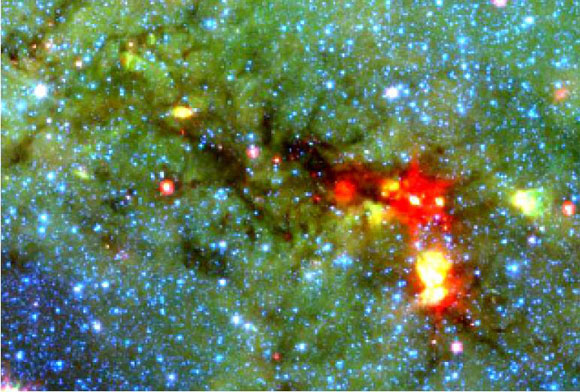
A false-color infrared image of a young, star-forming dust cloud with several embedded cores (identified in red). NASA/Spitzer and P. Myers
A new infrared study from the Harvard-Smithsonian Center for Astrophysics examined the cores of star-forming dust clouds in various stages of development, enabling astronomers to categorize the temperatures, densities, and evolutionary characters of young stellar nurseries.
Stars like the Sun begin their lives as cold, dense cores of dust and gas that collapse under the influence of gravity until nuclear fusion is ignited. These cores contain hundreds to thousands of solar masses of material and have gas densities about a thousand times greater than typical interstellar regions (the typical value is about one molecule per cubic centimeter). How the collapse process occurs in these embryos in poorly understood, from the number of stars that form to the factors that determine their ultimate masses, as well as the detailed timescale for stellar birth. Material, for example, might simply fall freely to the center of the core, but in most realistic scenarios the infall is inhibited by pressure from warm gas, turbulent motions, magnetic fields, or some combination of them.
Astronomers are actively studying these issues by observing young stars in the process of being born. The dust in these natal cores (or clumps), however, makes them opaque in the optical, thus requiring observations at other wavelengths, in particular infrared, submillimeter, and radio. In the early stages of star formation, an embryonic star heats the surrounding dust cloud to temperatures between about ten and thirty degrees kelvin before stellar winds and radiation blow the material away and expose the newborn star. CfA astronomers Andres Guzman and Howard Smith, together with their colleagues, have completed an analysis of 3246 star-forming cores, the largest sample ever done. The cold cores themselves were discovered with the APEX submillimeter-wavelength sky survey and then observed in sixteen submillimeter spectral lines; the spectral information enabled the astronomers to determine the distance to each core as well as to probe its chemistry and internal gas motions. The new paper combines these results with far-infrared measurements taken by Herschel Space Observatory surveys. The Herschel data allow the scientists to calculate the dust density, mass, and temperature of each core; the large dataset then permits useful statistical comparisons between cores with various parameters.
Sources in the sample fall generically into four categories: quiescent clumps, which have the coldest temperatures (16.8K) and the least infrared emission, protostellar clumps, which are sources with the youngest identifiable stellar objects, ionized hydrogen regions, which are cores within which the stars have ionized some of the surrounding gas, and “photo-dissociation” cores, the warmest of the set, which have dust temperatures around 28K, are slightly more evolved and brighter than the ionized hydrogen cores. Although the groups overlap in their properties, the large sample enables the scientists to conclude that, on average, in the quiescent clumps the dust temperature increases towards the outer regions, whereas the temperatures in protostellar and ionized hydrogen cores increase towards the inner region, consistent with the idea that they are being internally heated. The latter also tend to have dust densities that increase more steeply than the quiescent cores. This study has also identified a population of particularly cold and infrared-dark objects that are probably still in the stages of contraction, or else for some reason have had their star formation aborted. The new paper and its catalog are just the beginning: now that the dust in all these cores has been well characterized, astronomers can associate chemistry with dust temperature, for example, and study subgroups that might represent different stellar masses in gestation.
Reference: “Far-Infrared Dust Temperatures and Column Densities of the MALT90 Molecular Clump Sample” by Andrés E. Guzmán, Patricio Sanhueza, Yanett Contreras, Howard A. Smith, James M. Jackson, Sadia Hoq and Jill M. Rathborne, 21 December 2015, The Astrophysical Journal.
DOI: 10.1088/0004-637X/815/2/130
arXiv:1511.00762


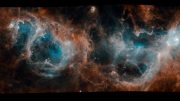
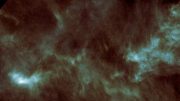

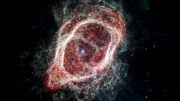
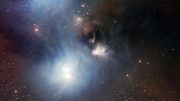
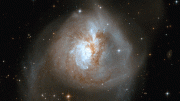
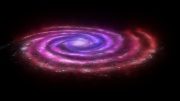
The basic tenet that is “poorly understood” seems illogical and just plain incorrect. It seems highly unlikely that gravity can account for the accumulation of dust to such a degree that a star forms or nuclear fusion occurs. It just doesn’t make sense.
It would be prudent to closely examine this “poorly understood” hypothesis. It certainly cannot be observed in our reality. Perhaps another model should be considered. The most powerful forces in deep space are being completely ignored when considering the sources of star formation. There is a growing and considerable body of recent evidence that suggests electromagnetism may be the driving force for star formation. Furthermore, we have a wealth of information that indicates our sun may in fact may be primarily an electromagnetic phenomenon.
The sun lacks the conduction velocities to support the model of nuclear fusion in the core. The surface temperature of 5k degrees and a coronal temperature of 2 million degrees also argues vehemently against a core source within the sun. We have now clearly established that the surface of the sun consists of plasma and massive magnetic fields, The latest IBEX mission findings confirm massive interstellar rivers of helium flowing into the sun (Astrophysical Journal October 2015 Supplement). Finally the acceleration of charged particles as they approach earth from the sun can only happen in an electric field and would never occur in a gravity based nuclear fusion model of the sun.
All common sense and newly acquired radio telescope data indicates a new vantage point for star formation be utilized. This is the only option that may correct the “poorly understood” theories that need to be discarded.
who said that gravity alone is responsible for the formation of stars? Gravity will only promote nebulous cloud in any galaxy. Closer the molecules electrons will no doubt come into play. Don’t we find ordinary clouds in atmosphere gets charged and electrons are responsible for the powerful lightning which we see ? Every force has got a domain to act. Gravitational forces domain stops at some minimum distance where electo-magnetic domain starts. electro magnetic domain stops at a region of weak electric force which causes W Bosons and Z Bosons to emanate. Here the force particles are very massive unlike photons and of course the weakest gravitons. Where even this domain stops you have very high powerful gluons which shoots of quarks which are are both electrical and massive in nature like bosons and which account for the creation of the universe visible. Thus all the forces of nature come into play according to the distances. Gravitational forces are singleton and electron forces are double like positive and negative charges whereas still powerful color forces of gluons are treble like Red, Blue and Green causing three dimensions to form a stable quark and with just two dimensions it may give birth to highly unstable mesons only. Gravity only collects the particles into a bigger solid and it won’t create particles. Gravity even collects your Dark Matter invisible though. Thank You.